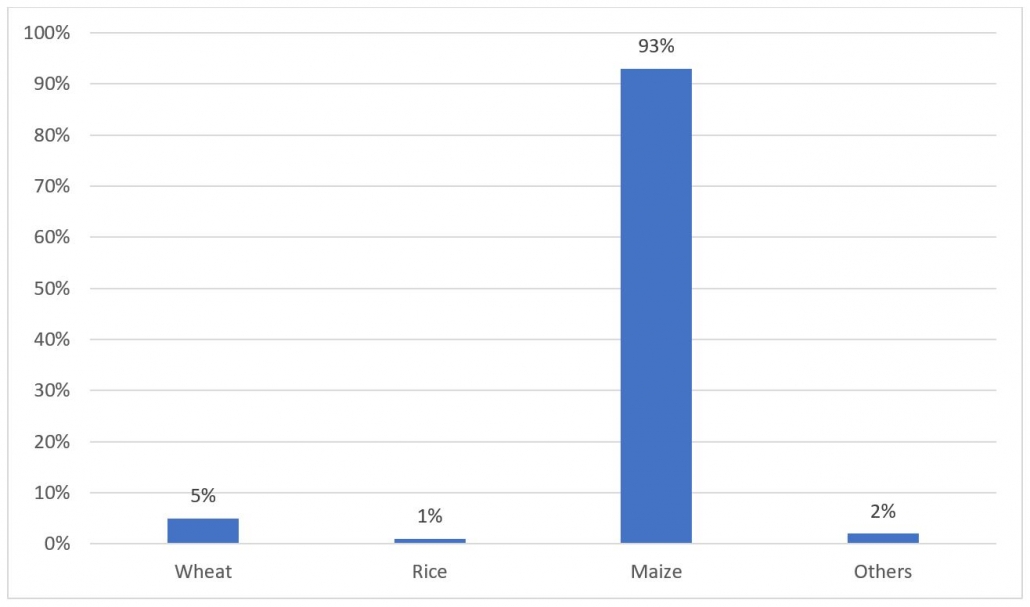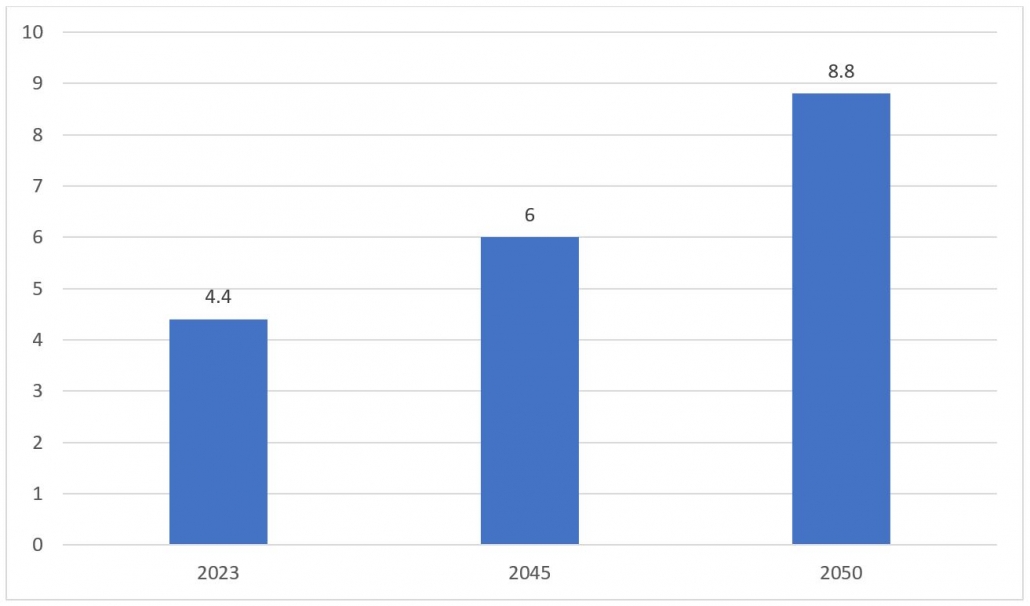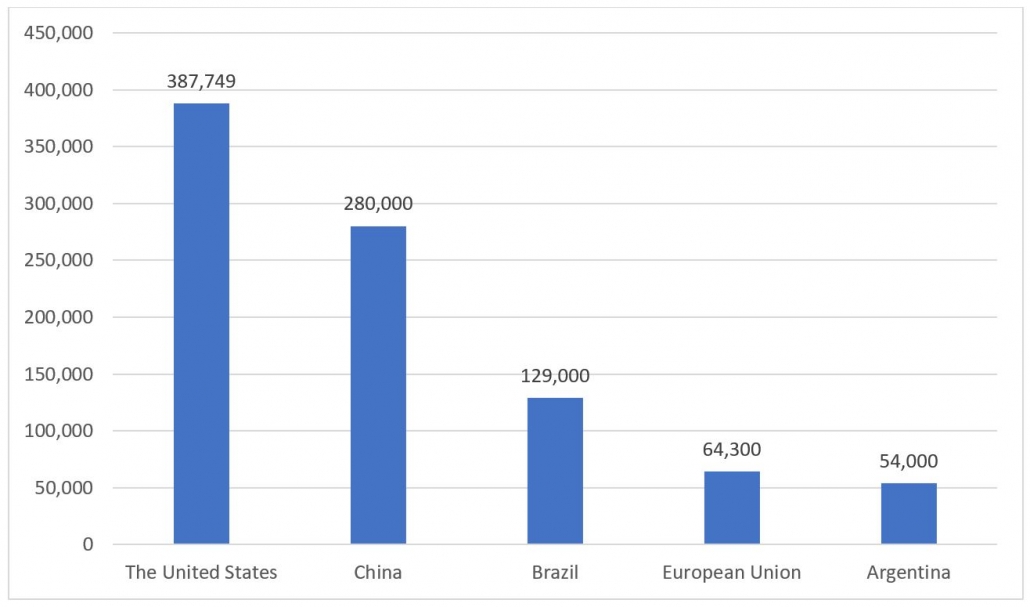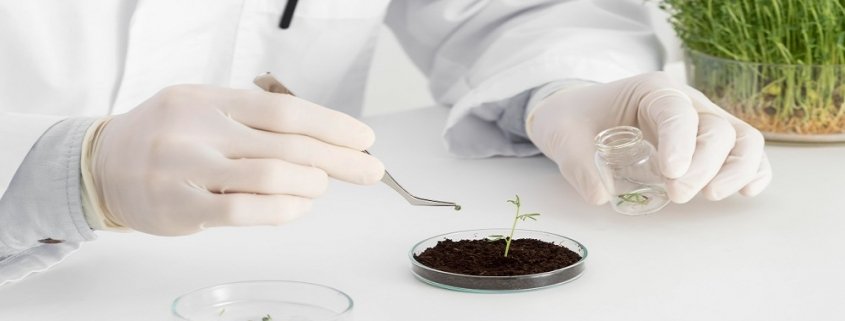Growing Corn Production & Nutrition Concerns Drive GMO Seeds Market
Genetically Modified Seeds Market
Genetically modified (GMO) seeds are produced by laboratories by biological engineers that use contemporary biotechnology techniques known as genetic engineering, which consists of the selection of individual genes and transferring them from one organism to another using recombinant DNA techniques, which further results in the genetically modified organism that cannot be produced through natural or crossbreeding techniques. Genetically modifying crops and seeds can help raise the degree of crop protection by strengthening the crop’s resilience or resistance to pesticides, infections and other pathogens, and also natural disasters and weather conditions, which include droughts, floods, extreme heat or cold, and many others. Some Genetically modified seeds or crops are also known to have increased yield production capabilities, which further lowers the cost of production and increases overall crop production in a short period. Genetically Modified seeds enhance harvest capabilities, allowing for more crop rotation and are known to be able to withstand several conditions such as drought, high salt concentrations, heat, or the presence of aluminium elements. Some of the various growth factors that drive the growth of the global genetically modified seeds market include the increasing growth in nutrition concerns, which is further influenced by the increase in the urbanization rate, and the increase in crop production, especially corn production, which is known for having a wide variety of GMO types.
Rise in nutrition concerns coupled with rapid urbanization propel the GMO seeds market.
Genetically Modified seeds are known to provide an increase in yield and nutrients for various types of crops in the market. The increase in the growth of the market can also be linked to the increasing need for animal feeds and the growing use of biofuels that are produced from GMO crops such as corn, soybeans, wheat and sugarcane. For instance, the OECD Agricultural Outlook 2023-2032 displayed the percentage use of crops in the production of biofuels in the market and also showed the increase in demand for biofuel production and feed in the market. The projected increase in the use of cereal crops such as wheat, maize, rice and other crops, accounts for 217 billion tonnes by 2032, which is further distributed into wheat with 5%, rice with 1%, maize with 93% and other crops with 2% contributions in the production of biofuels.
Figure 1: Projected Increase in Usage of Cereal Crops in Biofuel Production, Global, 2023-2032

(in percentage of total biofuel production)
Source: OECD Agricultural Outlook 2023-2032
Coupled with the increase in growth of crop production, the increasing urbanization rates drive the growth of global GMO seed production during the forecasted period. The increase in the global urban population gives rise to an increase in demand for better nutrition and yield in crop products, which include rice, wheat, corn, and many others, which are further processed for the production of products such as oil, and many others. As per the World Bank, the global urban population accounts for 56% of the total global population, which accounts for an estimated 4.4 billion people in 2023. It has been projected by the World Bank that the global urban population is expected to reach an estimated 6 billion by 2045 and is expected to double in size of the current urban population by 2050, which accounts for an estimated 6 billion and 8.8 billion respectively. The increasing urban population gives rise to an increase in the number of health-conscious consumers in the market, further influencing the increase in the production of food with increased nutrition.
Figure 2: Projected Urban Population Growth, Global, 2023-2050

(in billions of people)
Source: World Bank
Increasing growth of crop production, especially corn production, propels the growth of the GMO seeds market.
Corn accounts for the majority of genetically engineered crops existing in the market. The increasing demand for corn for ethanol production and livestock feed drives the growth of the global GMO seeds market during the forecasted period. GMO seeds are known to contain several properties that help in the increase of yield and the reduction of cost of production in agriculture, significantly improving the growth of the agricultural industry. As per developmentaid.org, corn, also commonly known as maize, was expected to increase to reach 1.17 billion metric tons in 2023. The top countries that account for the global increase in the production of corn include the United States, Argentina, the EU, and China. The United States accounts for the majority of corn production globally, accounting for an estimated 390 million metric tonnes and an annual production of 90 million acres of corn. China accounted for an estimated 280 million tonnes, which accounts for 23% of the global corn production. Brazil accounted for an estimated 129 million metric tonnes, which accounts for 11% of the global corn production. The EU and Argentina account for an estimated 64 million metric tonnes and 54 million metric tonnes respectively, which accounts for 5% and 4% of the global corn production respectively.
Figure 3: Top Corn Producing Countries, Global, 2023

(in 1000 metric tonnes)
Source: The United States Department of Agriculture
Key Developments:
March 2023: Corteva Agriscience announced the launch of their plant breeding innovation that can combat corn disease by adding protection to elite corn hybrids by advancing through the company’s R&D pipeline. The increase in the prevalence of plant diseases in agriculture increased the concern of farmers, which further boosted the need for multi-disease resistance concepts and also increased the need for additional crop protection product applications in the market. This innovation makes use of gene editing to combine and reposition disease-resistance traits that had already existed within the corn genome to bolster the disease’s tolerance and minimize production stress in corn. This technological innovation also offers healthier plants and increases yield potential even further. This allows farmers to have more freedom in the selection of performance characteristics that are more in line with their yield goals than having to worry about disease resistance.



